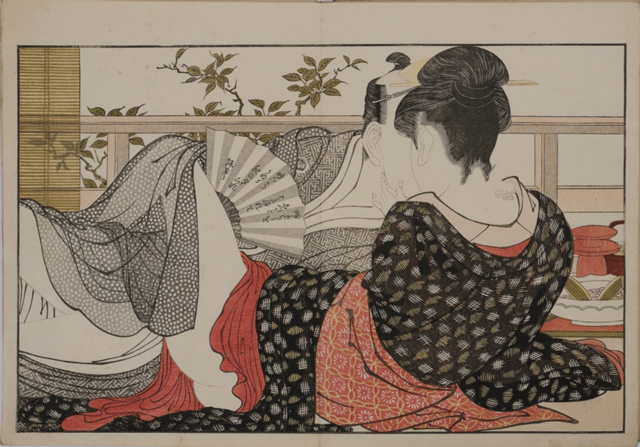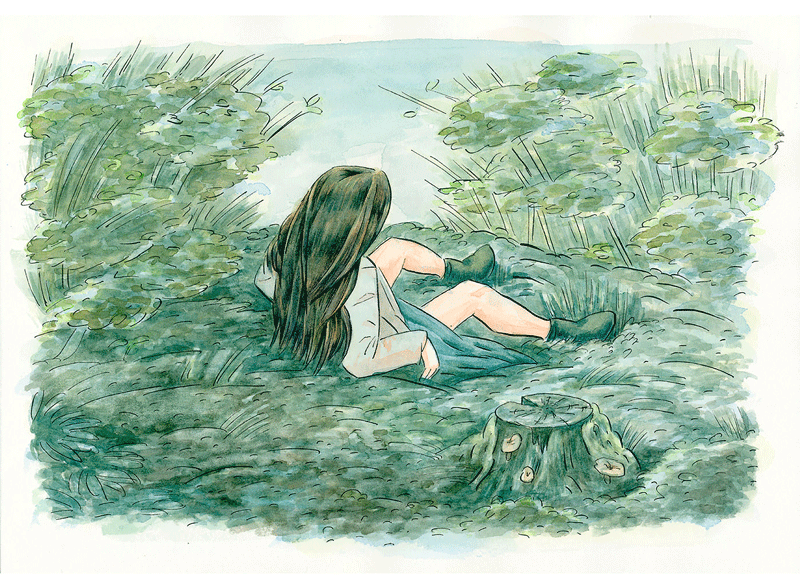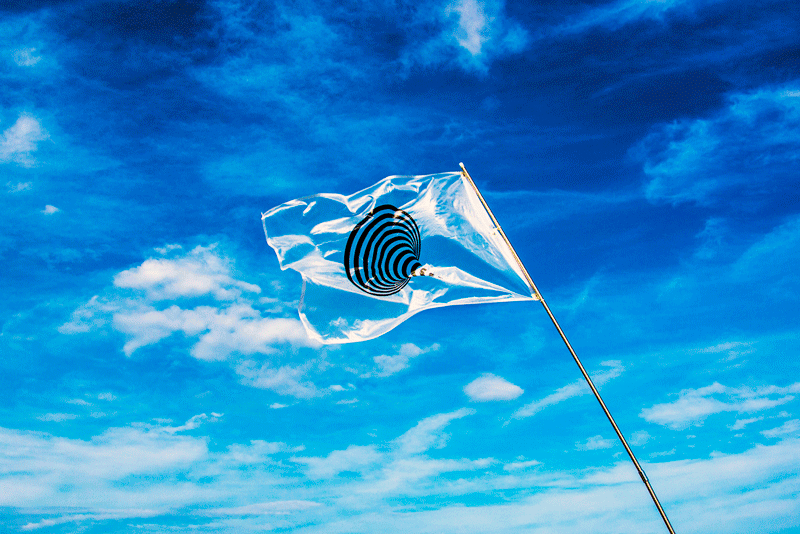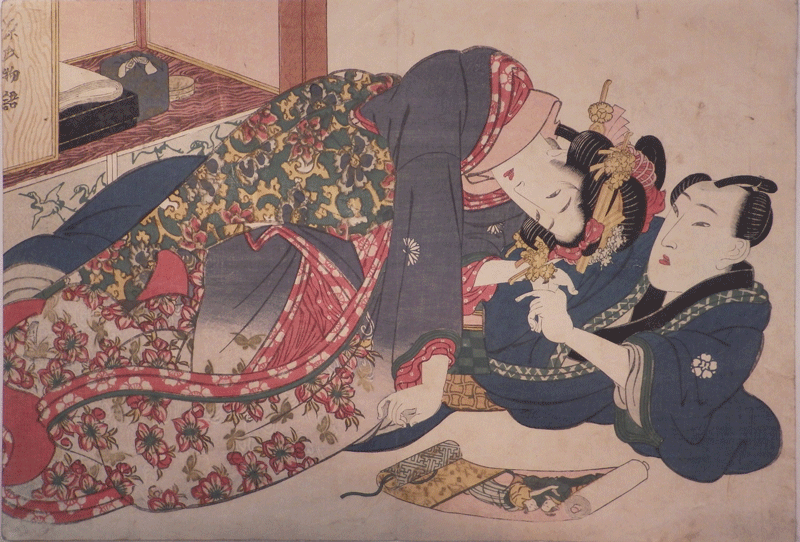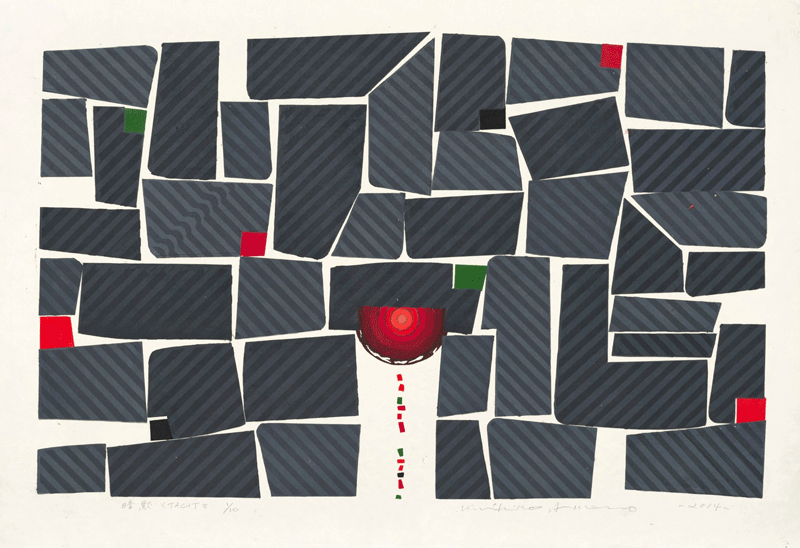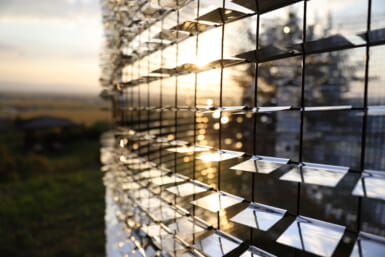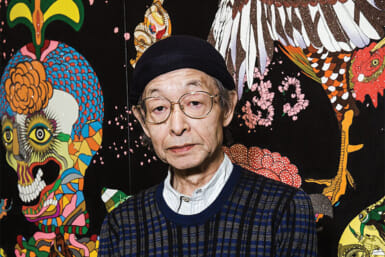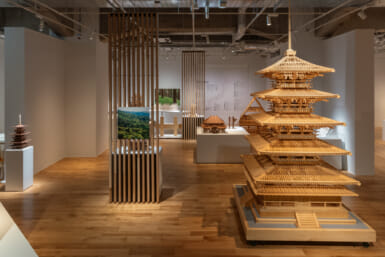Poem of the Pillow (Uta makura) Kitagawa Utamaro
This month is dedicated to the risqué, marginalized and unattainable, to art that asks many questions while saying very little. Though each utterly unique and incredibly varied, these exhibitions all have one thing in common – they not only invite, but require you, the visitor, to bring your own interpretation. Your silent participation is necessary for these works to exist.
By Sarah Custen
“Yui Horiuchi: FROM BEHIND ~For Her.~”
Open Letter is a small square of silence and light in an unremarkable building behind Shibuya station. Stumbling up the dingy stairwell and into the clean, bright, smooth space, one feels as though walking into someone else’s dream, a curious and slightly confused intruder in a scene of foreign tranquility.
And Yui Horiuchi’s watercolor series, “FROM BEHIND ~For HER.~,” extends that feeling, drawing the viewer into a lush and lonely world of beautiful, faceless women, wandering through vast landscapes and unknowable thoughts. Horiuchi is a young, Tokyo-based artist who works with many mediums, including oil painting and found fabric embroideries, always with an attention to detail and rich, natural color.
This exhibition, though small in scope, is nevertheless expansive in its beauty and inspiration. Over the past year Horiuchi has tended to these watercolors, drawing stimulus from the natural world and her relationships with women. A recent visit to the US’s Pacific Northwest is reflected in broad mountain ranges, ringed tree stumps and cool streams. Other works take us through verdant jungles and surreal deserts. Always, there is a single woman, turned away, eyes averted and instead offering us a jawline, an earlobe, a cheekbone. The women are quiet yet comfortable, lost in their own worlds, at once distancing themselves and beckoning us closer, silently soliciting a second look.
Open Letter Gallery
September 13–November 29, 2015
Open Sundays, 12:00–19:00
http://openletter.jp/exhibitions/yui-horiuchi-from-behind-for-her/
“Don’t Follow the Wind: Non-Visitor Center”
“Don’t Follow the Wind” is difficult to take in and even more difficult to explain. It is political, conceptual and, in many senses, inaccessible: an exhibition that one cannot go to see. And yet, there is something that must be seen, that can’t not be seen.
A collaborative international effort, “Don’t Follow the Wind” is an ongoing exhibition which takes place inside Fukushima’s restricted, radioactive Exclusion Zone, or “Difficult-to-Return” Zone, forbidden to the public. The exhibition’s works are left to live and decay within that space, installed by artists accompanying residents on their fleeting visits back to their homes.
Initiated by Chim-Pom and with participating artists and teams from all over the world, “Don’t Follow the Wind” offers a unique perspective on what an exhibition is, what it’s for, and what can and can’t be said about the TEPCO Daiichi nuclear power plant accident in Fukushima. “We consider this incident at Fukushima as a global problem, not only a domestic matter,” said Kenji Kobuta, on of the exhibition’s curators. “Japanese artists are well aware of the situation,” he explained, whereas “international artists can see this incident more in a global context.”
“Don’t Follow the Wind: Non-Visitors Center” is a small, satellite show. It is stark, minimal, seemingly unfinished, leaving viewers feeling excluded, confused and uncertain of what they’ve witnessed – an experience similar to that of Fukushima residents. “One of our aims with this project is to urge the audience to imagine the situation of the former residents,” said Kobuta, “and the cause of the incident in a broader context.” Indeed, this exhibition is undeniably stirring to the mind, asking many questions and offering up few answers within its silence and isolation. We are left to fill in the blanks, and in that sense we are an integral part of the work.
“We do not want to limit [visitors’] imagination,” Kobuta said. “We want to broaden their imagination.”
Watari Museum of Contemporary Art
September 19–October 18, 2015
Open 11:00–19:00, Wednesdays until 21:00, closed Mondays
http://www.watarium.co.jp/exhibition/under.html
“Spring Exhibition: Shunga”
Tokyo’s attitude towards sex is multi-faceted and complex, a city internationally infamous for a seedy sex scene that you almost never see, where impossibly buxom anime girls burst forth from magazines at every conbini, and nobody ever kisses in public.
And so it is equally remarkable and unremarkable that throngs of people will politely cue to get a closer look at cartoonishly large yet hyper-realistically detailed phalluses and erotic, artistic – quite often explicit – sex scenes.
Shunga has a long and complicated history in Japan, once welcomed and enjoyed, then forbidden and taboo, and now elevated with renewed acceptance. “Time has passed, and the world has been changed,” said curator of Eisei-Bunko Hidekazu Miyake. “It is hard to think that the audience today won’t take Shunga the same as the audiences from that era. However, we believe that they will enjoy our exhibition as brilliant, high-quality art.”
Shunga has historically served many purposes – erotica, satire, pornography – with some simple, black-and-white woodblock pieces, looking like illicit manga, and other full-length scrolls, ornately illustrated around involved narratives. In watercolor and woodblock, the works on exhibit are truly fascinating and represent huge talent, including the well-known Katsushika Hokusai. “Shunga is something historical,” said Miyake.
Indeed, while some may be shocked or titillated by the graphic scenes, the more jarring reaction comes from seeing classic Ukiyo-e style – fair faces, detailed natural scenes – interrupted by explicit, sometimes violent, sexuality. Yet Shunga demands a closer look, not only for its historical and cultural significance, but also for its strange, uncomfortable, undeniable beauty. “It is a true art piece,” said Miyake. “The bright color of paint and carefree line, the dynamic composition and variety of detail will surprise visitors.”
Eisei-Bunko Museum
Dates: September 19–December 23, 2015
Open: 9:30–20:00
Web: www.eiseibunko.com/shunga/
For three days, the College Women’s Association of Japan will be holding its annual Print Show. 2015 marks the 60th edition of this mainstay of the local arts community
CWAJ Print Show
“Across the globe, educated women are powerful agents of social change, transforming families, institutions and societies,” opens College Women’s Association of Japan President, Nancy Nussbaum, in her annual report. Yet how often do these women go unnamed, unnoticed, unrecognized by the larger public?
In this, the 60th year of CWAJ’s Annual Print Show, we are compelled more than ever to take notice. The exhibition is both a showcase for contemporary Japanese prints to an international audience, and an earnest bid to secure funding for scholarships and grants which CWAJ has thus-far provided to over 800 students and artists.
This year’s milestone-marking show features the top 60 competition entries from young artists (40 and under) as well as a special exhibition, “Kanreki: a 60-year Journey,” which traces the Print Show’s history through 160 works contributed by 130 invited artists. After showing in Tokyo and Kobe, the exhibition will move to Cape Cod in 2016. “It is our hope that this landmark event will attract significant financial support,” said CWAJ President Nancy Nussbaum, “to enable us to offer a greater number of scholarships.”
Tokyo American Club
Dates: October 30–November 1, 2015
Open: 11:00–20:00 (Fri.), 11:00–18:30 (Sat.), 11:00–18:00 (Sun.)
Web: cwaj.org

